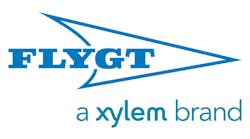The 200-acre Monmouth Park Racetrack in Oceanport, New Jersey, opened on July 30, 1870, just three miles from the seashore town of Long Branch. The racetrack is supported by a series of barns and other support facilities that house in excess of 500 horses during track operations. At one time, the stormwater from the barns in the racetrack backstretch area drained directly into Branchport Creek impacting the water quality of the receiving waters downstream from the racetrack.
Scope
In the mid-1990s the New Jersey Sports and Exposition Authority (NJSEA), which previously owned and operated the racetrack, constructed facilities to collect horse wash water and first flush stormwater runoff for conveyance to the Two Rivers Water Reclamation Authority (TRWRA), a wastewater treatment facility located in Monmouth Beach. At that time, TRWRA could only accept up to 125,000 gallons per day. Runoff volumes often exceeded that amount, resulting in direct discharge to Branchport Creek.
The NJSEA and the New Jersey Department of Environmental Protection (NJDEP) combined efforts to improve the overall water quality of the creek and interacting waterways. Regulations required on-site handling and treatment of horse stable area stormwater runoff for up to a 25-year storm, significantly reducing any potential contaminants to Branchport Creek.
Flygt’s pump station design skills enabled the racetrack to remain in operation while all environmental concerns with stormwater handling were addressed.
Solutions
The design concept was from the NJSEA and executed by consulting engineer Paulus, Sokolowski & Sartor (PS&S). Among the key elements of the plan was construction of a new stormwater pumping station to pump 500,000 gallons of stormwater per day generated in the backstretch area, track, parking areas, and grandstand to TRWRA for treatment using two Flygt 20-hp NP3153 submersible pumps each rated for 1,900 gpm, pump excess volume of stormwater to the Elkwood Basin using five 250 hp Flygt CP3501 submersible pumps each rated at 19,300 gpm, and conveyance of the stored stormwater in the Elkwood Basin to TRWRA for final treatment during dry weather using two additional Flygt NP3153 pumps.
Pump manufacturer Xylem and their distributor, Pumping Services Inc., worked closely with PS&S to design the new pump station. The Flygt CP 3501 pumps are designed to handle different types of flows. Available with cast iron or duplex stainless steel three-channel impellers, the pumps feature excellent flow passing properties that reduce clogging in the impeller channel. A narrow gap between the interchangeable wear rings ensures high efficiency.
The pumping system utilizes two pump groups in two separate wet wells. The smaller effluent wet well has four equally sized NP3153 pumps. The larger influent wet well has five larger equally sized CP3501 pumps. A motorized gate isolates and/or directs flow to the effluent wet well. All nine pumps utilize variable frequency drives to control their speed and flow.
The project was completed in 2012 with no interruption to racetrack operations. Today, the racetrack continues its daily operations while addressing all environmental concerns and keeping the surrounding community safe and clean.
Editor's Note: Scranton Gillette Communications and the SGC Water Group are not liable for the accuracy, efficacy and validity of the claims made in this piece. The views expressed in this content do not reflect the position of the editorial teams of Water & Wastes Digest, Water Quality Products and Storm Water Solutions.


